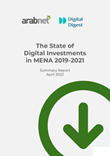
Many businesses today aim to attract new customers by creating more personalized customer experiences, setting customer experience at the top of their priority lists. To do so, companies need to stand out by tapping into disruptive technologies that can offer personalized solutions to customers’ needs.
Below is a list of the top disruptive technology trends that we need to keep a close eye on. They are innovations that are already shaping consumer behavior and can ultimately change the world.
Internet of Things (IoT)
The IoT is a giant network of connected “things”. These “things” can be any device that has an on and off switch and is connected to the internet including gadgets, vehicles, structures and different things which are inserted with electronics, software, sensors and network connectivity thereby empowering these items to gather and exchange information. The IoT’s popularity is on the rise with products like Google Home and Amazon Echo changing the game.
Through these technologies, customers are always online which allows such innovations to monitor behaviors, collect data and offer tailored packages based on their audiences’ needs. Thus, customers are ultimately opting to purchase safety, peace of mind and energy efficiency.
One of the latest examples is Amazon Go, the cashier-free store where you can simply grab what you want and leave. The concept behind Amazon Go relies on connectivity to their app and sensors that track what you take. In the long run, Amazon and other stores will be able to monitor your shopping and inventory, allowing for precise predictions on what you will need next. Products will also be a tap or a swipe away!
Artificial Intelligence/Cognitive Computing
Artificial intelligence (AI) is a set of technologies that is designed to analyze information & perform tasks accordingly. With the likes of SIRI, Huawei’s latest AI camera technology and Google search, AI has become a need in many devices as it can outperform humans at nearly every cognitive task - Scary!
AI helps businesses understand customers efficiently and swiftly by analyzing the enormous amounts of data provided by their online activity and purchasing habits. Today, companies aim to optimize their relationship with their customers to increase retention rates, offering targeted ads and chatbots. AI chatbots learn from previous interactions to provide answers to customer inquiries which can be widely used in answering restaurant and retail inquiries, and for medical diagnosis.
In five years, IBM predicts that cognitive computers will use what we say and write as indicators of our mental and physical health. It does so by analyzing speech patterns and written words to predict the underlying illness, be it Alzheimer’s, PTSD or even ADHD. Through cognitive assistants and sensors, doctors can track and treat the progression of a patient’s disease.
Robotics
Whether they are industrial or domestic robots, their capabilities are changing the limitations of what humans can do. The service industry is automating tasks so that employees can spend more time on improving the customer experience. Robots are already cooking, serving meals in restaurants and making room service delivery in hotels.
While industrial robots are common in manufacturing, domestic robots are just emerging with the latest example of Jibo Robot. Using AI, Jibo experiences the world by reacting to movements and gestures and responding therefore acting as a new family member and assistant. He can remember people, create relationships with people he meets, play music, snap pictures and much more. Jibo is a successful first step towards accessible robotics.
Wearable devices
Despite a sluggish start, wearable technology is still on the rise today and is becoming the center of business investments. Most wearable gadgets allow consumers to track anything from health to sleep, making wearable tech the first step towards adopting a healthier lifestyle with reduced stress.
Wearable tech permits food, fitness and wellbeing brands to create a highly personalized relationship with consumers providing them with custom-made data and connecting them to supportive communities. Devices like Fitbit and Nike+ encourage users to create their own workout community which in turn leads to a beneficial connection between the consumer and the brand. Today, these companies rely on these communities to test their products, to spread word of mouth and to share content and ideas.
Fashion has even joined this tech party with the latest collaboration between Google and Levi, presenting us with the Commuter Trucker Jacket with Jacquard, the smart technology created by Google. The wearer of the jacket can use multiple gestures to control various functions such as handling calls, navigating maps or adjusting the volume which makes this the perfect fashionable jacket for bikers and people on-the-go.
There are multiple disruptive technologies on the rise and brands are still trying to discover the full potential of existing ones, but the main interest now is the consumer experience. Today, our life is being governed by technology with different innovations in the making and on the rise. These innovations will soon alter our world, change our habits, and transform the quality of life. But for now, the question remains: are these technologies positively or negatively impacting our lives as we move towards a more advanced future?
Latest Business
Intelligence Report















